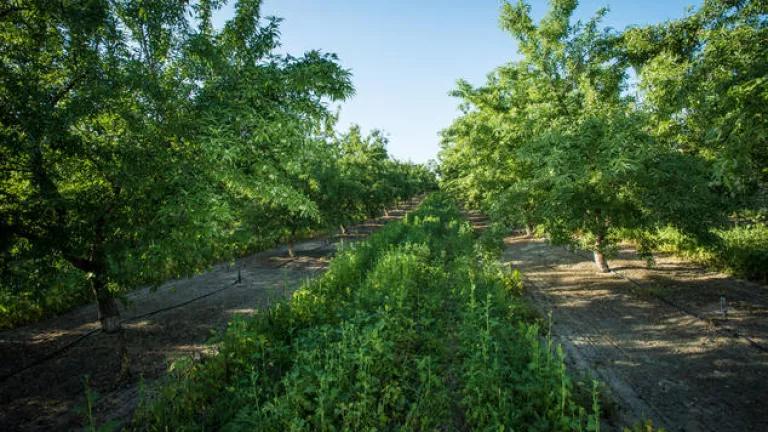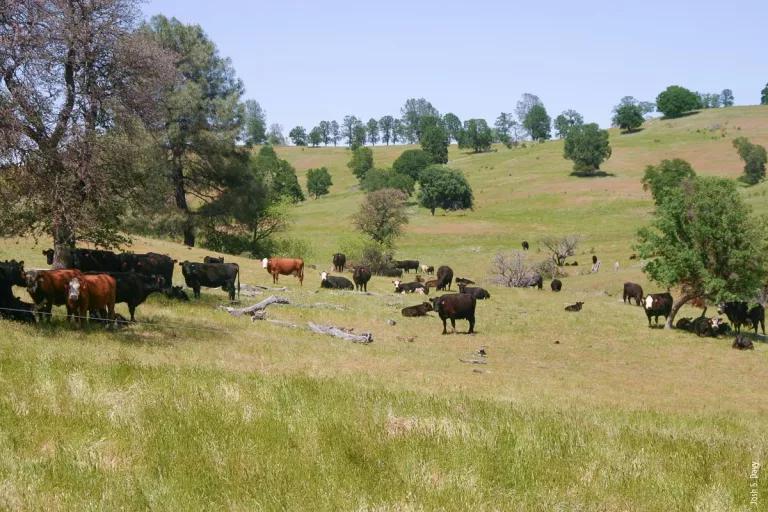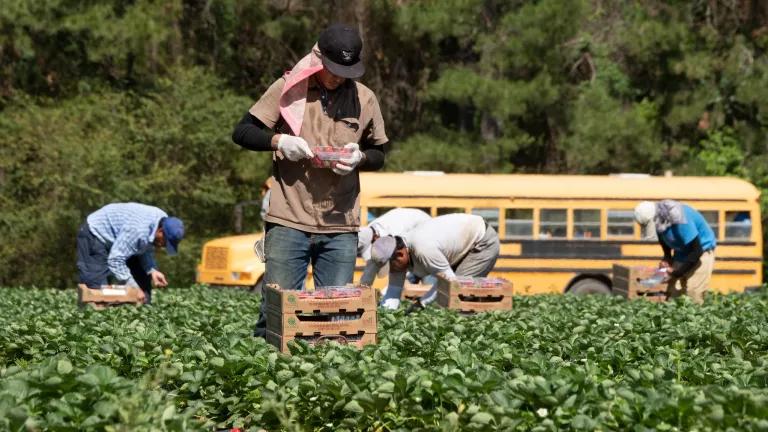FY22 California Budget Invests in Agricultural Resilience
California’s 2022 budget is finalized and it contains significant investments in climate friendly agriculture, soil health, on-farm water efficiency, farmworker housing, wildfire prevention, and so much more.

These funding successes, totaling $477 million for fiscal year 2022-23, come at the heels of a two-year budget campaign organized by the California Food and Farm Resilience Coalition, which NRDC helps lead. Over the past two years, the Coalition has successfully advocated for more than $2 billion in funds towards projects that help transform California’s food and farming system to be more resilient, healthy, and equitable. Here are some highlights from this year:
$85 million for the Healthy Soils Program
Soil is the foundation of a resilient food and farming system. Healthy soil is soil that holds onto more carbon from the atmosphere–a critical tool to fighting our climate crisis, holds onto more water–a critical tool to helping farmers and ranchers fight drought, and better cycles nutrients–reducing the need for synthetic inputs like fertilizers. The state’s robust investment in the Healthy Soils Program will ensure that growers across the state have the financial help they need to experiment with practices like composting, cover cropping, mulching, planting riparian buffers, and reduced tillage, which help build soil health.
$110 million for the State Water Efficiency and Enhancement Program (SWEEP)
The Department of Water Resources warns that by 2050, every year has a 50% chance of being in an extreme drought year like what we experienced in 2014. Drought is the new normal for California and it’s more critical than ever for the agricultural sector to reduce its irrigation demands to respond to this new normal. SWEEP provides grants to farmers to install more water efficient irrigation systems that can help save water. $110 million in additional funding for SWEEP will help more farmers be better stewards of dwindling surface water supplies. We must make sure funding is prioritized for small and medium sized growers and that water saved does not go towards expanding acreage of water thirsty crops, a phenomenon known as the rebound effect.
$39 million for the Climate Smart Land Management Program
In April 2022, the California Natural Resources Agency published its Climate Smart Lands Strategy, which details several actions the state can take to mitigate climate change on our natural and working lands, including our croplands. The budget’s $39 million for the Climate Smart Land Management Program will help fund technical assistance needed to partner with private landowners to invest in the agricultural projects prioritized in the Climate Smart Lands Strategy, such as planting hedgerows and putting land in conservation easements.
$65 million to protect and promote farmworker safety and well-being
Farmworkers are an essential part of our state’s agricultural system and it is vital they have access to safe housing for themselves and their families. The 2022-23 budget provides $50 million towards the Joe Serna, Jr. Farmworker Housing Grant Program, which helps fund the construction of new farmworker housing. Additionally, the budget provides $15 million to weatherize farmworker housing, making them more energy efficient and reducing energy costs. Funds can go towards installing solar systems and purchasing other energy efficiency upgrades for low-income farmworker households.

Cattle in a Prescribed Grazing Paddock in California in Spring
$80 million for prescribed grazing projects that help prevent wildfires
Reintroducing livestock to grass and rangelands can reduce the types of “fine” fuels (e.g. grasses) where wildfires start. Prescribed grazing is a regenerative agricultural practice where vegetation is managed with ruminants. In fact, for millions of years, California’s grasslands co-evolved with fire and with the help of large ruminants that grazed and trampled grasses. Reintroducing animals to the land, instead of confining them to industrial feedlots, is a key principle of regenerative agriculture, and it’s exciting to see the budget allocate $80 million to the Department of Forestry and Fire Prevention for projects and infrastructure that supports prescribed grazing as a tool to prevent wildfires.
$12 million to help transition farms to organic agriculture
Organic agriculture helps farmers fight climate change and can help agriculture become part of the climate solution, but transitioning to organic agriculture is not always easy. Though AB 2499–introduced by Assemblymember Maienschein–would have created a permanent organic transition program in California did not make it to the Governor’s desk, this year’s budget makes significant investments in helping farmers transition to organic agriculture. This includes $5 million for a new organic transition pilot program that prioritizes underserved producers and $7 million for technical assistance providers to help growers draft organic transition plans.
We are incredibly grateful to all the partners in the Coalition who helped garner these wins; and to the countless other organizations who stepped up and signed onto budget letters, shared tweets, participated in meetings with legislators, and promoted action alerts, thank you. Your support proves how broad coalitions and unconventional partnerships yield the kinds of transformative investments we need to turn our food and farming system into a climate solution. We will continue working with the Coalition to ensure these investments are made and programs are implemented for the benefit of a more resilient, equitable, and healthy agricultural system and ecosystem.
For another detailed breakdown of funding for food and farming efforts, check out this blog written by one of our partners, the California Climate and Agriculture Network.




